 In the U.S., more than 90% of community water supplies are treated with chlorine to kill harmful organisms. While this makes water safe from germs, it also produces chemical byproducts called trihalomethanes (THMs). And these chemicals cause chronic kidney disease (CKD), according to a new study in JAMA Network Open.
In the U.S., more than 90% of community water supplies are treated with chlorine to kill harmful organisms. While this makes water safe from germs, it also produces chemical byproducts called trihalomethanes (THMs). And these chemicals cause chronic kidney disease (CKD), according to a new study in JAMA Network Open.
Researchers used data from the California Teachers Study, tracking 89,320 women from the mid-1990s through 2018. They calculated each woman’s long-term exposure to four types of THMs using annual water measurements from 1995–2005, also factoring in other toxins like uranium and arsenic.
Findings:
-
● 6,242 participants developed CKD during follow-up
● Average total THM: 5.5 µg/L (top 5%: ~58 µg/L)
● Average brominated THM: 2.7 µg/L (top 5%: 30 µg/L)
● Brominated THM ≥30 µg/L → 43% higher CKD risk
● Even moderate exposure (75th percentile) → 23% higher CKD risk
● Brominated THMs contributed 53% of total CKD risk, followed by uranium (35%), arsenic (6%), and chloroform (5%)
Crucially, these risks appeared below the current U.S. safety limit for total THMs (80 µg/L).
Protect yourself:
Check your local water utility’s annual quality report for chlorine and THM levels. If they’re high, consider a carbon-based filter, like many pitcher or under-sink systems, and replace filters regularly.

 Overcoming IBD
Overcoming IBD Multiple Sclerosis
Multiple Sclerosis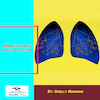 Banishing Bronchitis
Banishing Bronchitis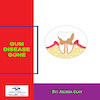 Gum Disease Gone
Gum Disease Gone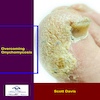 Overcoming Onychomycosis
Overcoming Onychomycosis Neuropathy No More
Neuropathy No More The Prostate Protocol
The Prostate Protocol Brain Booster
Brain Booster
 Ironbound
Ironbound
 Solution for Shingles
Solution for Shingles
 The Bone Density Solution
The Bone Density Solution
 The Ultimate Healing Protocol
The Ultimate Healing Protocol
 The Parkinson's Protocol
The Parkinson's Protocol
 The Chronic Kidney Disease Solution
The Chronic Kidney Disease Solution
 Overthrowing Anxiety
Overthrowing Anxiety The Fatty Liver Solution
The Fatty Liver Solution The Hypothyroidism Solution
The Hypothyroidism Solution
 The End of Gout
The End of Gout The Blood Pressure Program
The Blood Pressure Program
 The Oxigized Cholesterol Strategy
The Oxigized Cholesterol Strategy
 Stop Snoring And Sleep Apnea Program
Stop Snoring And Sleep Apnea Program
 The Arthritis Strategy
The Arthritis Strategy The Vertigo & Dizziness Program
The Vertigo & Dizziness Program The 3-Step Diabetes Strategy
The 3-Step Diabetes Strategy Hemorrhoids Healing Protocol
Hemorrhoids Healing Protocol The Erectile Dysfunction Master
The Erectile Dysfunction Master Weight Loss Breeze
Weight Loss Breeze The IBS Program
The IBS Program The Insomnia Program
The Insomnia Program The Migraine and Headache Program
The Migraine and Headache Program The Neck Pain Solution
The Neck Pain Solution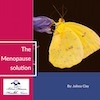 The Menopause Solution
The Menopause Solution The Ejaculation Master
The Ejaculation Master The TMJ Solution
The TMJ Solution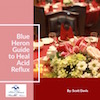 The Acid Reflux Solution
The Acid Reflux Solution The Fibromyalgia Solution
The Fibromyalgia Solution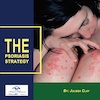 The Psoriasis Strategy
The Psoriasis Strategy